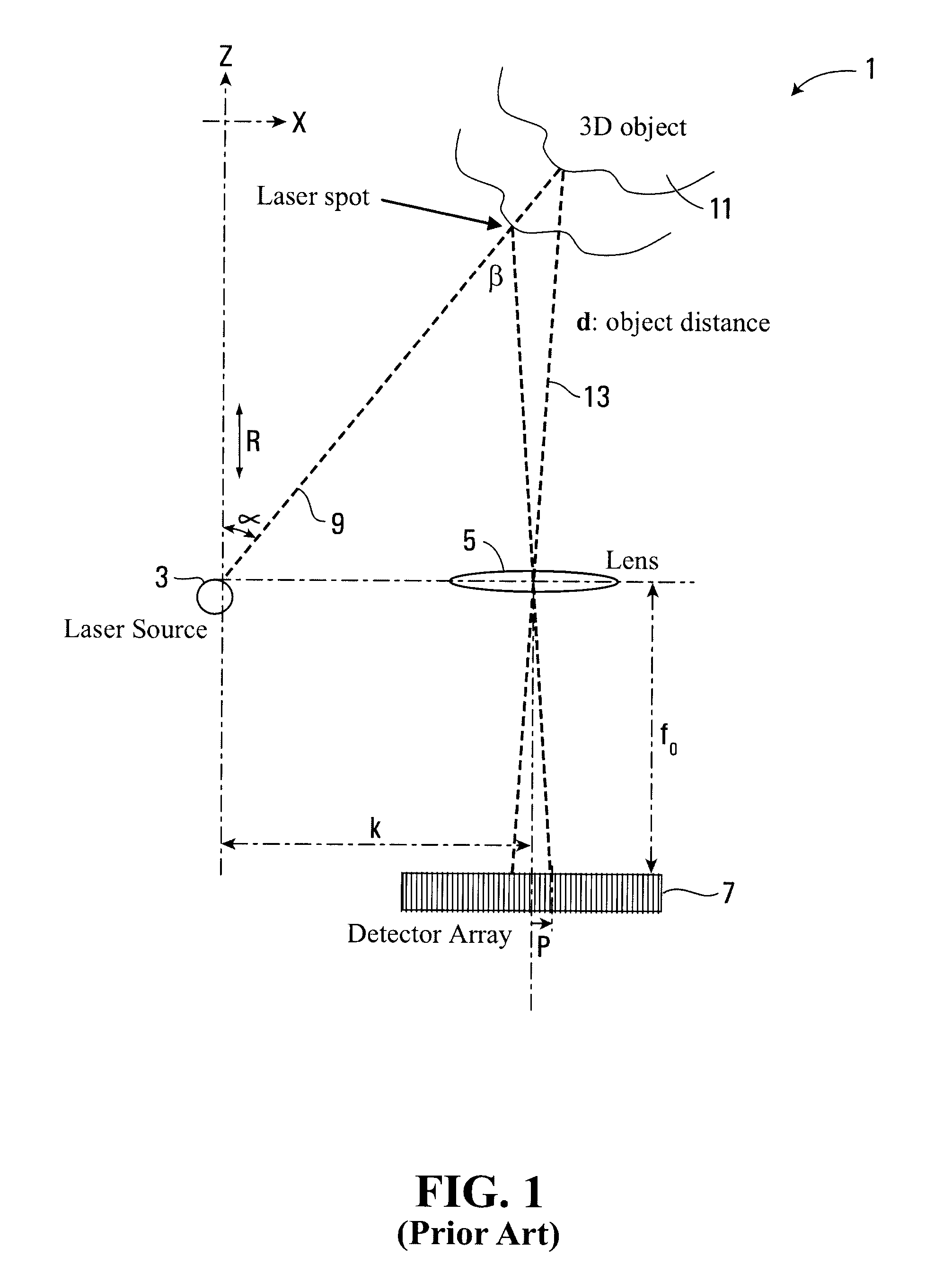Imaging system and method
a technology of imaging system and image, applied in the field of imaging system and method, can solve problems such as slow speed measurement, and achieve the effects of reducing edge effect errors, reducing speckle noise and edge effect errors, and reducing errors due to edge
- Summary
- Abstract
- Description
- Claims
- Application Information
AI Technical Summary
Benefits of technology
Problems solved by technology
Method used
Image
Examples
Embodiment Construction
[0052]FIGS. 3, 4 and 5 show an example of an apparatus according to an embodiment of the present invention.
[0053]The apparatus generally shown at 201 comprises a projection system 203 for projecting a beam of energy 205 onto a target object 207, a receiving system 209 for receiving reflected beam energy from the target object 207 and a detector 211 for detecting the received beam energy.
[0054]It will be appreciated that for a diffuse surface, the incident beam will be scattered in many different directions as for example shown by the ray lines 206 in FIG. 4, and a portion of the scattered radiation will be received by the receiving system and detected by the detector. The position of the received beam energy on the detector depends on the angle β between the projected beam and received reflected beam energy at the target surface. As the angle β depends on the range of the target surface, the position of the received beam energy at the detector provides a measure of the range.
[0055]I...
PUM
 Login to View More
Login to View More Abstract
Description
Claims
Application Information
 Login to View More
Login to View More - R&D
- Intellectual Property
- Life Sciences
- Materials
- Tech Scout
- Unparalleled Data Quality
- Higher Quality Content
- 60% Fewer Hallucinations
Browse by: Latest US Patents, China's latest patents, Technical Efficacy Thesaurus, Application Domain, Technology Topic, Popular Technical Reports.
© 2025 PatSnap. All rights reserved.Legal|Privacy policy|Modern Slavery Act Transparency Statement|Sitemap|About US| Contact US: help@patsnap.com



